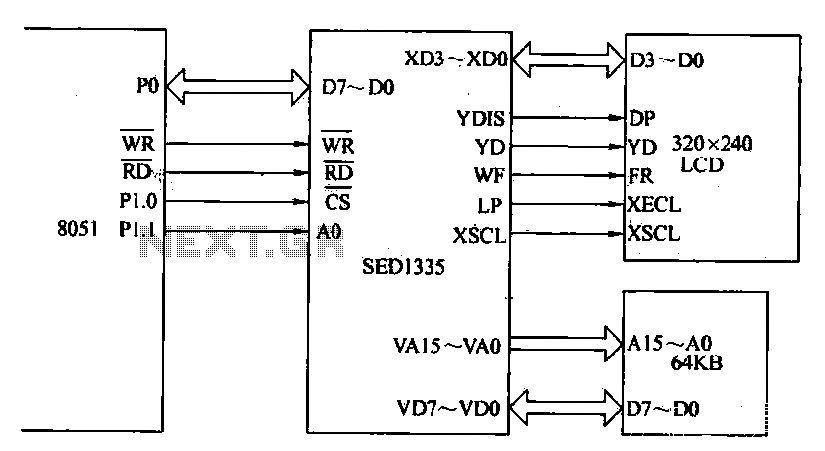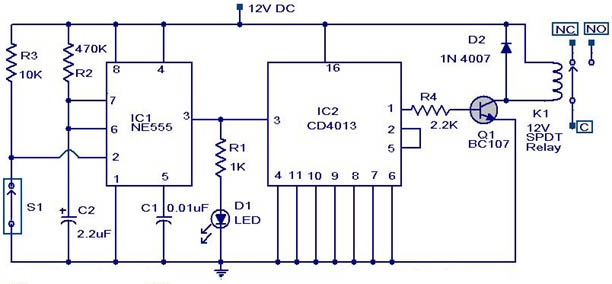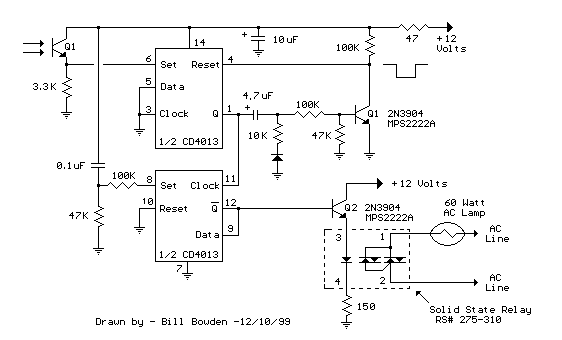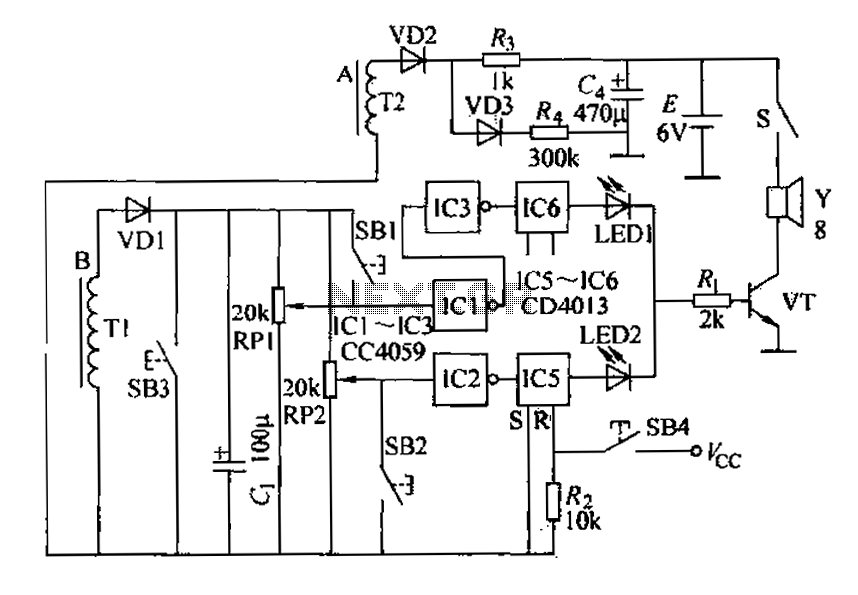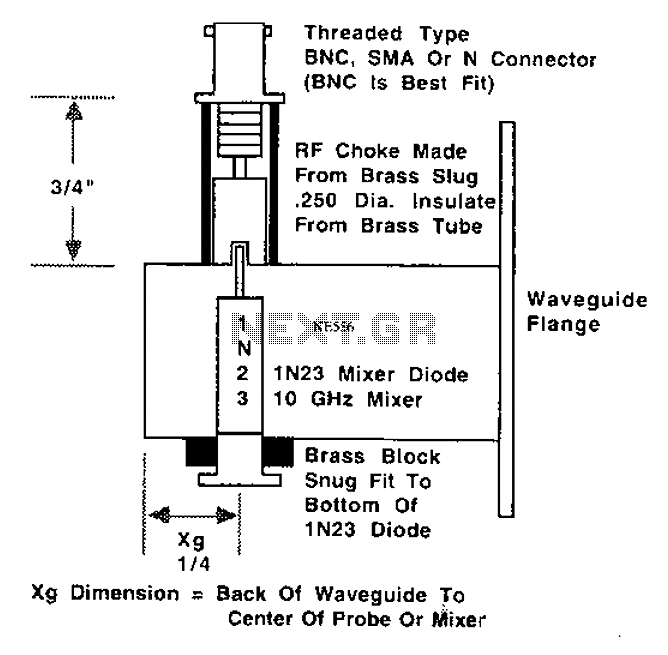
Bistable circuit at the operating frequency of 100kHz or less
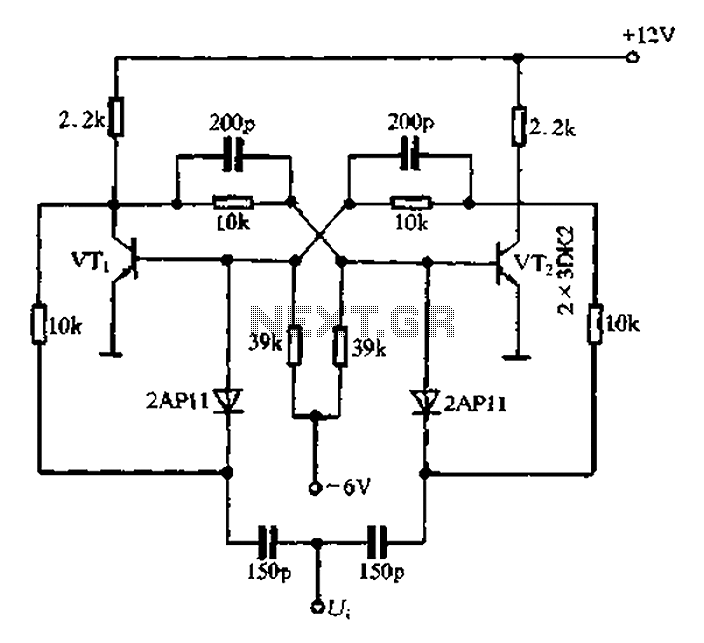
Bistable circuit operating at a frequency of 100 kHz or less.
A bistable circuit, also known as a flip-flop, is a type of electronic circuit that has two stable states and can be used to store binary information. This circuit can maintain its state indefinitely until an external trigger causes it to change states. The operating frequency of 100 kHz or less indicates that the circuit is suitable for applications where high-speed operation is not required, making it ideal for various control and memory applications.
Typically, a bistable circuit can be implemented using different configurations, such as the SR (Set-Reset) flip-flop, D (Data) flip-flop, or JK flip-flop. Each of these configurations has specific input and output characteristics that can be leveraged based on the application requirements.
In a basic SR flip-flop, two cross-coupled NOR or NAND gates are used. The inputs are labeled 'Set' and 'Reset.' When the Set input is activated, the output will transition to a high state, and when the Reset input is activated, the output will transition to a low state. The circuit remains in the last state until either input is triggered again.
For a D flip-flop, a single data input is used along with a clock signal. The output follows the data input when the clock signal transitions, thus providing a simple way to store a single bit of information. The D flip-flop is particularly useful in synchronous systems where data needs to be captured at specific intervals.
The JK flip-flop extends the functionality of the SR flip-flop by allowing both inputs to be active simultaneously. This characteristic enables toggling of the output state when both inputs are high, making it suitable for counters and more complex state machines.
In designing a bistable circuit to operate at frequencies of 100 kHz or less, considerations should include the choice of components, such as the type of logic gates used, the power supply voltage, and the load capacitance. The timing characteristics, including propagation delay and setup/hold times, must also be analyzed to ensure reliable operation within the specified frequency range.
Overall, a bistable circuit is a fundamental building block in digital electronics, enabling the implementation of memory elements, state machines, and various control logic applications. Bistable circuit at the operating frequency of 100kHz or less
A bistable circuit, also known as a flip-flop, is a type of electronic circuit that has two stable states and can be used to store binary information. This circuit can maintain its state indefinitely until an external trigger causes it to change states. The operating frequency of 100 kHz or less indicates that the circuit is suitable for applications where high-speed operation is not required, making it ideal for various control and memory applications.
Typically, a bistable circuit can be implemented using different configurations, such as the SR (Set-Reset) flip-flop, D (Data) flip-flop, or JK flip-flop. Each of these configurations has specific input and output characteristics that can be leveraged based on the application requirements.
In a basic SR flip-flop, two cross-coupled NOR or NAND gates are used. The inputs are labeled 'Set' and 'Reset.' When the Set input is activated, the output will transition to a high state, and when the Reset input is activated, the output will transition to a low state. The circuit remains in the last state until either input is triggered again.
For a D flip-flop, a single data input is used along with a clock signal. The output follows the data input when the clock signal transitions, thus providing a simple way to store a single bit of information. The D flip-flop is particularly useful in synchronous systems where data needs to be captured at specific intervals.
The JK flip-flop extends the functionality of the SR flip-flop by allowing both inputs to be active simultaneously. This characteristic enables toggling of the output state when both inputs are high, making it suitable for counters and more complex state machines.
In designing a bistable circuit to operate at frequencies of 100 kHz or less, considerations should include the choice of components, such as the type of logic gates used, the power supply voltage, and the load capacitance. The timing characteristics, including propagation delay and setup/hold times, must also be analyzed to ensure reliable operation within the specified frequency range.
Overall, a bistable circuit is a fundamental building block in digital electronics, enabling the implementation of memory elements, state machines, and various control logic applications. Bistable circuit at the operating frequency of 100kHz or less

